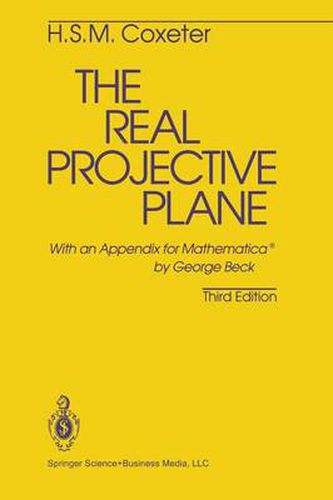Readings Newsletter
Become a Readings Member to make your shopping experience even easier.
Sign in or sign up for free!
You’re not far away from qualifying for FREE standard shipping within Australia
You’ve qualified for FREE standard shipping within Australia
The cart is loading…






This title is printed to order. This book may have been self-published. If so, we cannot guarantee the quality of the content. In the main most books will have gone through the editing process however some may not. We therefore suggest that you be aware of this before ordering this book. If in doubt check either the author or publisher’s details as we are unable to accept any returns unless they are faulty. Please contact us if you have any questions.
Along with many small improvements, this revised edition contains van Yzeren’s new proof of Pascal’s theorem (1.7) and, in Chapter 2, an improved treatment of order and sense. The Sylvester-Gallai theorem, instead of being introduced as a curiosity, is now used as an essential step in the theory of harmonic separation (3.34). This makes the logi cal development self-contained: the footnotes involving the References (pp. 214-216) are for comparison with earlier treatments, and to give credit where it is due, not to fill gaps in the argument. H.S.M.C. November 1992 v Preface to the Second Edition Why should one study the real plane? To this question, put by those who advocate the complex plane, or geometry over a general field, I would reply that the real plane is an easy first step. Most of the prop erties are closely analogous, and the real field has the advantage of intuitive accessibility. Moreover, real geometry is exactly what is needed for the projective approach to non-Euclidean geometry. Instead of introducing the affine and Euclidean metrics as in Chapters 8 and 9, we could just as well take the locus of ‘points at infinity’ to be a conic, or replace the absolute involution by an absolute polarity.
$9.00 standard shipping within Australia
FREE standard shipping within Australia for orders over $100.00
Express & International shipping calculated at checkout
This title is printed to order. This book may have been self-published. If so, we cannot guarantee the quality of the content. In the main most books will have gone through the editing process however some may not. We therefore suggest that you be aware of this before ordering this book. If in doubt check either the author or publisher’s details as we are unable to accept any returns unless they are faulty. Please contact us if you have any questions.
Along with many small improvements, this revised edition contains van Yzeren’s new proof of Pascal’s theorem (1.7) and, in Chapter 2, an improved treatment of order and sense. The Sylvester-Gallai theorem, instead of being introduced as a curiosity, is now used as an essential step in the theory of harmonic separation (3.34). This makes the logi cal development self-contained: the footnotes involving the References (pp. 214-216) are for comparison with earlier treatments, and to give credit where it is due, not to fill gaps in the argument. H.S.M.C. November 1992 v Preface to the Second Edition Why should one study the real plane? To this question, put by those who advocate the complex plane, or geometry over a general field, I would reply that the real plane is an easy first step. Most of the prop erties are closely analogous, and the real field has the advantage of intuitive accessibility. Moreover, real geometry is exactly what is needed for the projective approach to non-Euclidean geometry. Instead of introducing the affine and Euclidean metrics as in Chapters 8 and 9, we could just as well take the locus of ‘points at infinity’ to be a conic, or replace the absolute involution by an absolute polarity.